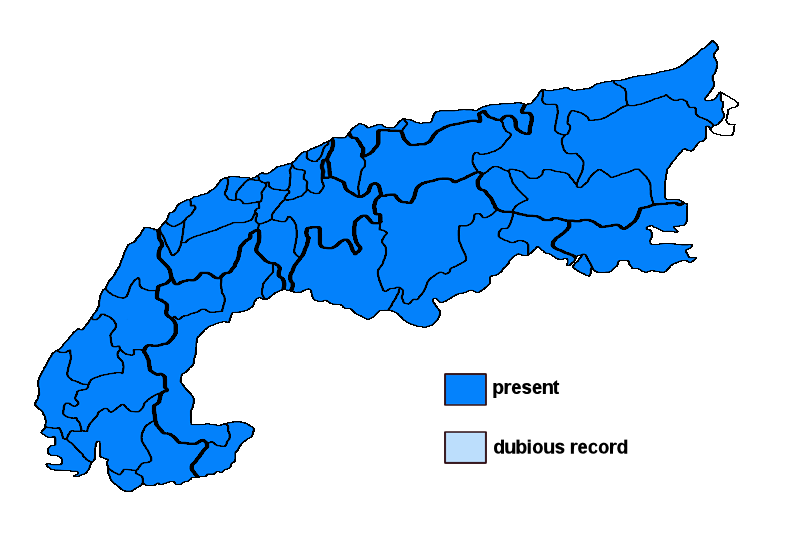Melanelixia glabra (Schaer.) O. Blanco, A. Crespo, Divakar, Essl., D. Hawksw. & Lumbsch
Syn.: Melanelia glabra (Schaer.) Essl., Parmelia glabra (Schaer.) Nyl., Parmelia olivacea (L.) Ach. var. corticola Th. Fr. f. glabra Schaer.
Lichenised.
Substrate: bark, lignum
Altitudinal range: from the mesomediterranean belt (potential vegetation: evergreen broad-leaved forests dominated by Quercus ilex) to the subalpine belt (potential vegetation: open, taiga-like forests dominated by Larix decidua and/or Pinus cembra and Rhododendron)
Note: a mild-temperate lichen found on more or less isolated, mostly deciduous trees, with optimum in the submediterranean belt, but common also in the beech belt; ecologically similar to Pleurosticta acetabulum; widespread throughout the Alps.
Austria: Vorarlberg; Tirol; Salzburg; Kärnten; Steiermark; Oberösterreich; Niederösterreich (incl. Wien); Germany: Oberbayern; Schwaben; Switzerland: Appenzell; Bern; Fribourg; Glarus; Graubünden; Luzern; St. Gallen; Schwyz; Ticino; Uri; Unterwalden; Vaud; Valais; France: Alpes-de-Haute-Provence; Haute-Alpes; Alpes-Maritimes; Drôme; Isère; Savoie; Haute-Savoie; Vaucluse; Var; Italy: Friuli; Veneto; Trentino Alto Adige; Lombardia; Piemonte; Valle d'Aosta; Liguria; Slovenia: Alpine and Pre-Alpine Slovenia; Trnovsky Gozd; Liechtenstein





